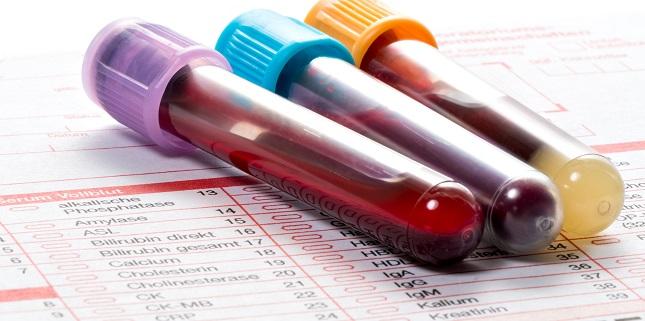NT-proBNP Test Could Help Guide Hypertension Therapy: ARIC Analysis
In patients without a CVD history, the biomarker was an independent predictor of CV events and mortality.

In people with no history of CV disease, N-terminal pro-brain natriuretic peptide (NT-proBNP) levels can predict a higher risk of developing CV disease across various blood pressure and pulse pressure ranges, new data from the Atherosclerosis Risk In Communities (ARIC) study suggest.
The findings raise the possibility of using NT-proBNP tests, which have typically been restricted to the diagnosis and management of heart failure (HF), in the setting of hypertension, researchers say.
Additional information on individual risk could help clinicians refine decisions about therapy, said lead author Aliza Hussain, MD (Baylor College of Medicine, Houston, TX). The most recent hypertension guidelines recommend a treatment goal of less than 130/80 mm Hg across patient groups, she noted, but making a decision to get more aggressive in patients with only moderate hypertension has been a tough sell.
“In that group of 120 to 139, where there is a lot of debate on whether intensive blood pressure control would result in more side effects, more risk of falls or dizziness, et cetera, of NT-proBNP may help identify those that could benefit from intensive blood pressure treatment and in whom the benefit may outweigh the risk or harm of intensive blood pressure treatment,” Hussain told TCTMD.
The ARIC data add to the growing understanding that NT-proBNP could play a bigger role beyond HF, including in patients with no known cardiovascular disease, as was seen in an analysis of the Multi-Ethnic Study of Atherosclerosis (MESA), notes Martin A. Alpert, MD (University of Missouri-Columbia, School of Medicine), in an editorial accompanying the study in the Journal of the American College of Cardiology.
“It would seem reasonable to consider utilizing NT-proBNP as an independent predictor of the outcomes noted in persons without CVD (ARIC criteria) and within the constraints of this study,” Alpert writes.
Strong Associations Seen
Hussain and colleagues looked at data from the population-based ARIC study on 9,309 participants with no CVD history. A higher baseline NT-proBNP level was found more often among people who were older, female, white, and smokers.
Approximately one-quarter of the cohort had a CV event over a median follow-up of 16 years. Of these, 49% occurred in patients with systolic BP < 130 mm Hg and 59% in those with NT-proBNP < 100 pg/mL Among those with a NT-proBNP ≥ 300 pg/mL, 52% experienced a CV disease event. The event rates were lowest for those with NT-proBNP levels < 100 pg/mL and systolic BP either < 120 mm Hg or 120-129 mm Hg.
As NT-proBNP levels increased, so did higher hazards for CVD events, CV mortality, and all-cause mortality across each category of systolic pressure. Having an NT-proBNP > 300 pg/mL, regardless of BP, was associated with more incident stroke, HF hospitalization, CVD, CV-related mortality, and all-cause mortality compared with being in the highest BP category (> 150 mm Hg), but having a NT-proBNP level under 300 pg/mL.
In the 120-139 mm Hg group, even a NT-proBNP level of > 100 pg/mL was associated with more CV events and higher risk for incident HF, CVD, CV-related and all-cause mortality than a BP of 140-149 mm Hg with a NT-proBNP level under 100 pg/mL.
Similarly, the researchers found associations between pulse pressures and NT-proBNP levels, with greater risk for incident CHD, ischemic stroke, HF hospitalization, and CV-related and all-cause mortality with increasing NT-proBNP. The greatest risk was in those with the highest pulse pressure (≥ 60 mm Hg) and NT-proBNP levels of 300 pg/mL or higher.
For the group as a whole, regardless of blood- and pulse-pressure categories, the link between increasingly levels of NT-proBNP and adverse events was particularly pronounced for heart failure.
Future Steps for Biomarker Research
In the editorial, Alpert notes that NT-proBNP was previously only considered as a risk predictor across different blood-pressure categories if elevations were seen in combination with other biomarkers, such as troponin.
To TCTMD, Hussain said while high-sensitivity troponin T is primarily a cardiac and myocardial injury marker, the novel association in this cohort with stroke prediction suggest that NT-proBNP is more of a systemic marker. It may pick up on such things as myocardial stretch, vascular tension, and neurohormonal activation, for example, to help zero in on heightened stroke risk independent of blood pressure.
Although more data are needed, Hussain said, a biomarker-based approach may be an important key to resolving some of the uncertainty or hesitation around strict blood pressure control, especially in those on the lower end of what has previously been considered “good” pressures, such as the mid-130s.
“Obviously we'll need a biomarker-based clinical trial to tell you whether treating those people to a systolic less than 130, as the guidelines say, is going to be clinically beneficial,” she added. “But what we can say from this study is that, yes, it does identify within that group a [separate] group that is at an elevated risk.”
L.A. McKeown is a Senior Medical Journalist for TCTMD, the Section Editor of CV Team Forum, and Senior Medical…
Read Full BioSources
Hussain A, Sun W, Deswal A, et al. Association of NT-ProBNP, blood pressure, and cardiovascular events: the ARIC study. J Am Coll Cardiol. 2021;77:559-571.
Alpert MA. Natriuretic peptides as predictors of cardiovascular events and all-cause mortality. J Am Coll Cardiol. 2021;77:559-572-574.
Disclosures
- The ARIC study was funded in whole or in part with federal funds from the National Heart, Lung, and Blood Institute, National Institutes of Health, and Department of Health and Human Services.
- Hussain and Alpert report no relevant conflicts of interest.





Comments